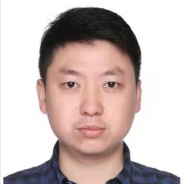Numerical Analysis of Microstructure and Mechanical Properties in Metallic Materials
A special issue of Crystals (ISSN 2073-4352). This special issue belongs to the section "Crystalline Metals and Alloys".
Deadline for manuscript submissions: closed (30 November 2023) | Viewed by 5886
Special Issue Editors
Interests: microstructure-based simulation; multi-scale modelling; mechanical properties; alloys; high strength steels; crystal plasticity finite element method (CPFEM); micro flexible rolling technology; lightweight materials; micromechanics of materials; metal forming; microstructure control; nanolubrication, tribology
Interests: numerical simulation of metal forming; tribology in metal forming; multi-scale materials processing; advanced rolling technology; microforming; manufacturing of composites; contact mechanics; friction and wear in manufacturing; lubrication technology; development of novel lubricants
Special Issues, Collections and Topics in MDPI journals
Interests: microstructure characterization; metal processing and mechanical property control; micro-nano mechanics; hydrogen embrittlement; nanotribology; nanolubricants; steels
Special Issues, Collections and Topics in MDPI journals
Interests: microstructure characterization; manufacturing; property optimization; plastic deformation, precipitation, steels, strain hardening behavior, ultrafine-grained
Interests: microstructure-based simulation; crystal plasticity finite element method (CPFEM); mechanical properties; forming, machining; tribology
Special Issue Information
Dear Colleagues,
The microstructure plays a vital role in determining the mechanical properties in metallic materials. It is recognised that numerical modelling has become increasingly prevalent in the corresponding engineering analysis, such as processing design optimisation, property prediction, and the development of new advanced products. Nevertheless, the link between the microstructure and properties in metallic materials may result in a variety of challenges, including microstructure-based modelling and simulation, multiscale simulation, formability prediction, and the corresponding deformation and damage mechanisms. Therefore, to increase processing productivity and produce high-quality, high-performing products, it is crucial to investigate numerical approaches for a better understanding of the microstructure–properties relationship involved in metallic materials.
This topic aims to provide a framework for collective understanding of the state of the art in the numerical modelling of metallic materials and further encourage interdisciplinary interaction for the upcoming advancement and application of numerical modelling techniques in materials science and engineering. Accordingly, scientists, researchers, and engineers are cordially encouraged to submit articles to this Special Issue on a variety of related subjects.
Dr. Mingshuai Huo
Prof. Dr. Zhengyi Jiang
Prof. Dr. Wenzhen Xia
Dr. Guanqiao Su
Dr. Tao Zhang
Dr. Lianjie Li
Guest Editors
Manuscript Submission Information
Manuscripts should be submitted online at www.mdpi.com by registering and logging in to this website. Once you are registered, click here to go to the submission form. Manuscripts can be submitted until the deadline. All submissions that pass pre-check are peer-reviewed. Accepted papers will be published continuously in the journal (as soon as accepted) and will be listed together on the special issue website. Research articles, review articles as well as short communications are invited. For planned papers, a title and short abstract (about 100 words) can be sent to the Editorial Office for announcement on this website.
Submitted manuscripts should not have been published previously, nor be under consideration for publication elsewhere (except conference proceedings papers). All manuscripts are thoroughly refereed through a single-blind peer-review process. A guide for authors and other relevant information for submission of manuscripts is available on the Instructions for Authors page. Crystals is an international peer-reviewed open access monthly journal published by MDPI.
Please visit the Instructions for Authors page before submitting a manuscript. The Article Processing Charge (APC) for publication in this open access journal is 2600 CHF (Swiss Francs). Submitted papers should be well formatted and use good English. Authors may use MDPI's English editing service prior to publication or during author revisions.
Keywords
- microstructure-based modelling and simulation
- 2D/3D representative volume element (RVE)
- crystal plasticity finite element method (CPFEM)
- multiscale modelling and simulation
- numerical analysis
- finite element method (FEM)
- mechanical properties prediction
- metallic materials
- deformation features
- manufacturing processes
- stress and strain distribution
- damage mechanisms
- formability prediction
- plastic deformation and strain damage
- materials constitutive modelling
- microstructure-property relationship










